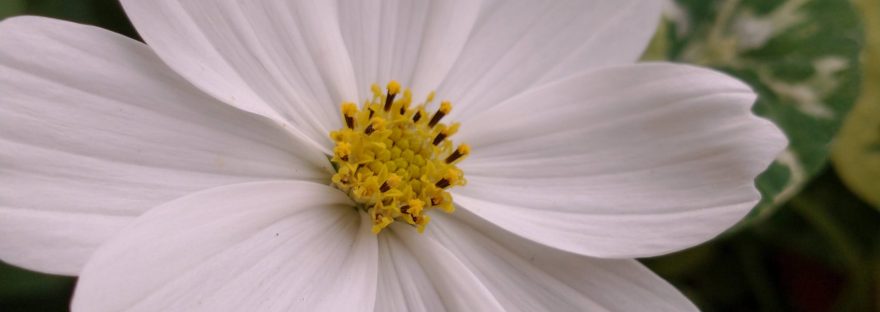“Don’t judge each day by the harvest you reap but by the seeds that you plant.”
Robert Louis Stevenson
We’ve all been there: the allure of full, vibrant flowers beckoning to us at the entrance of the garden centers. We tell ourselves we’ll “spend just $50,” but we walk out two hours later and $200 poorer, depending on your point-of-view.
Buying flowers on a budget is challenging.
What are our challenges and weaknesses?
We want instant gratification. We want beauty. We want lush flowers bursting from our gardens and front door containers to bring us joy and cause envy in our visitors and neighbors. We want those utterances of praise regarding how beautiful our garden is and how welcoming and comforting our porches look. We desire to walk outside in the morning to take in the beauty around us and smile at the results of our hard work. And when we return from a hard day of work, we want to be welcomed by that calming feel plants naturally provide by their scent and image. Then we want to relax with a cup of tea or glass of wine, sitting outside to savor our environment.
Patience, as is said, is a virtue. But when it comes to growing plants—patience is hard because plants take sooooo long to grow!
When we are in the middle of a garden center, surrounded by hundreds of glorious plants, it’s easy to see why we are swayed to grab whatever will fill our cart, reasoning three dollars here and there is fine. Or that $30 hanging fuschia is worth every penny, so why not grab two? Garden centers can be both daunting and mesmerizing all at once.
While we may start growing plants from seeds and those few seedlings are attempting to sprout in a corner of our sunroom or in a warm, designated space outside, and we’re thrilled when they begin emerging, the more mature plants in the garden centers we see can make us feel depressed and even resentful because our seedlings are tiny. But these garden centers purchase mature seedlings from a plant (no pun intended!) that is capable of mass production.
When our budget is small, what can we do to bring beauty to our landscape? Here are seven tips to get you started:
Tip 1: Plan ahead
Plan ahead as much as possible. This not only saves you money, but time if you have very little. Search online for plants that work well in your area, and check your neighbors’ yards to see what grows well since you’ll likely have similar soil. If you want plants for your yard or containers, do a search to discover what works in those environments and what will thrive in your USDA growing zone. Also, make sure you know the conditions your plants will be in: full sun, partial or full shade, yard or container. Certain plants are more suitable for specific environments and conditions, so make sure you know what you’re buying.
Make a list of the plants you desire, as well as options if some are not available. This will help you quickly navigate the section that contains your list of plants. It will also help you to avoid plants that flutter their colorful petals of desire at you because you have your list and you don’t need the extra, pricier plants that will cause you regret and stress if you cave in to their tempting allure.
Then, depending on where you’re headed to buy, check their prices online if they’re available so you know what you’ll be looking at for cost. It’s easier to shorten your list online than it is when they’re in front of you.
Tip 2: Head to the back of the center
Garden centers typically put the spring flowers at the front of the line and outdoors strategically placed at the entrance because those are the plants that will soon be out of season and no longer blooming. The centers want these pushed out of their way as soon as possible as they make room for the next season—summer.
When you arrive at the center, move past the front of the line and head toward the back where the seedlings for early summer would most likely be placed. Check the description tags as they will tell you the bloom time for that flower. If you want something that will last, choose ones that bloom summer to fall. Some even begin blooming late spring and last until fall.
Also, the hardy seedlings are in larger containers, look healthy, and have a hefty price tag. The instinct for many people, as mentioned, is to lean toward instant gratification and less of a wait time for blooms. But, if you have a bit of patience, check further back, maybe even the shadows, where you’ll notice seedlings in smaller containers. Those will be cheaper and you’ll usually end up with more. Compared to their pricier, larger counterparts, these small ones might seem unhealthy, even dead. But all they need is to be planted, watered, and patiently loved.
Tip 3: Buy perennials
This is a great way to save money from year to year. Annuals are cheaper because they only bloom once and typically won’t return the following year. Perennials return each year and bloom larger each time.
Check the growth maturity because what might start as a small, spindly bush or flower, can grow to four feet tall and six feet wide! Usually by the third year of growth is when the perennial will look its most lush, so patience is required here. But the first year is still satisfactory.
Buying one or a few perennials will save you money in the long run as they will fill out your garden over time. And you can start with one or two and add some each year. Perennials can be grown in containers as well, but they’ll need a bit more care and nurturing during the winter months, so be sure to read how to care for these perennials during the winter season.
Tip 4: Check growth times and how long they last
Understand the seasons your flowers and plants typically mature and when they begin to die down. Most people love those first spring flowers, such as daffodils and tulips, but these are short-lived. You will want to make sure you have other late spring flora appearing to make up for the naked green grass left behind.
If you have a small budget and not a lot of time, it might be best to aim for plants that bloom and mature through the seasons, such as late spring to fall. Some plants will bloom for a season, such as late spring to early summer, but leave behind a lush plant to enjoy the rest of the year. While others bloom and then die, leaving you a hole to replace with something else.
As recommended in Tip 1, include this in your planning and budget if you want to replace plants you must have for your pleasure. Otherwise, stick to plants that last longer.
Tip 5: Look for coupons and discounts
Those of us who scour for discounts and coupons on a regular basis because that is, after all, a great way to save money, should include coupons related to gardening.
Check your local garden centers and big-box garden centers to see if they offer coupons and discounts. It might take some extra digging (darn those puns!), but you never know what you might turn up. Check their websites and Facebook pages; sign up for their newsletters (especially the local garden centers); and if you’re bold enough—ask them! Some places offer quiet discounts (they don’t advertise), such as senior discounts, so just ask. They might even price match.
Also check local gardens and arboretums. They also might have sales to make room for their new arrivals and want to sell off their older plants.
Tip 6: Check clearance racks and ask about throwaways
Anytime I shop retail, the first place I head is the discount rack. You should do the same for plants.
Here is where garden centers are trying to “weed” through the old supply to make way for the new. The plants may look sad and in sore need of water and sunshine, but plants can be brought back to life. You might have to “dig” around for something you are thrilled to nurse back to health, but your patience and care will be rewarded in time. The plants might even give you fuller blooms to thank you for rescuing them!
Also, here is where you might also find great bargains for gardening tools, containers and pots, and other useful items for your gardening needs.
You could also ask an employee or manager about their “throwaways.” Some places have a policy to throw away nearly dead plants, or plants past the season that they cannot sell within an allotted time. While some gardening centers might donate these plants to non-profit organizations, often they throw them away. So ask if you’d be allowed to get them at a discount or even for free.
Tip 7: Use seeds and plant clippings
Seeds are one of the cheapest ways to grow lush plants. However, as any of us who grow plants from seeds know, they do take time, which is why we usually start growing them indoors to have some object to plant when it’s time.
Although they might look small and even disappointing when we plant them, they always surprise us. What started out as a few inches can grow several inches—even a foot or more—within a few weeks. I’m always amazed at what air, sunshine and water do for our seedling babies.
Seedlings eventually fill out and look amazing. And typically if they’re ones we’ve grown instead of originating from a factory, they’re usually healthier.
Seeds can last awhile in their package if you store them in a temperature-controlled environment instead of a hot garage (I keep mine in a drawer in the kitchen). Which means if you don’t use all your seeds, you can save them for the next year (or two) and continue to get beautiful blooms without having to buy more seeds.
Plant clippings are another way to save money. If, like me, you have plants a few years old that have grown to massive proportions, consider dividing them and planting bits of them in other containers to start new ones. For example, a heartleaf philodendron (Philodendron cordatum), one of the easiest houseplants to own (not pet friendly), never seems to stop growing, and you might constantly be giving it a haircut. You can take those cuttings and place them in water until the roots appear. Or, you can simply plug them into the potted soil and watch them gain traction.
As your plants or flowers flourish and develop, simply divide them among your containers or yard and watch them multiply. It’s a great way to expand your garden, without the added cost. It’s recycling on a new level!
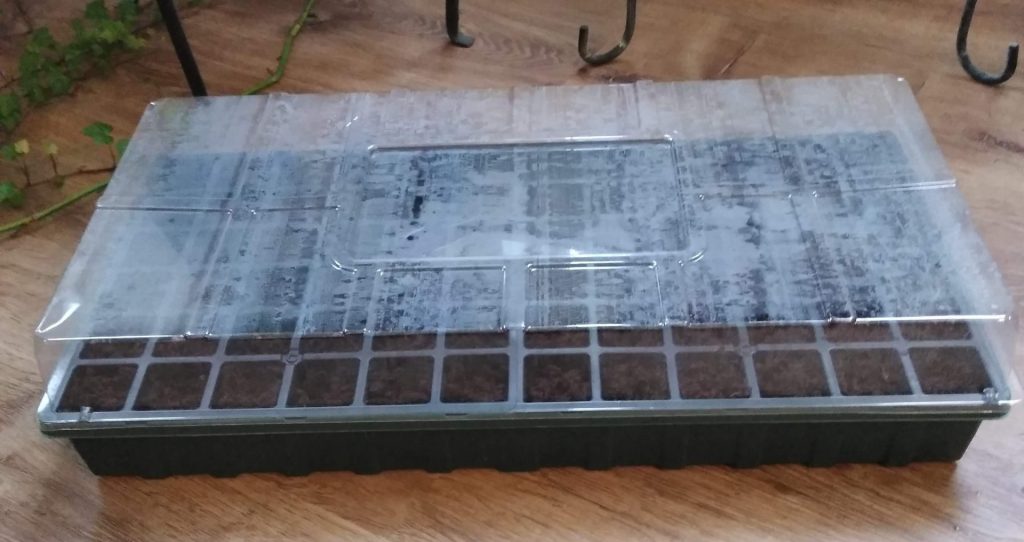
Seeds early March 
Seeds early March 
Seedlings late March 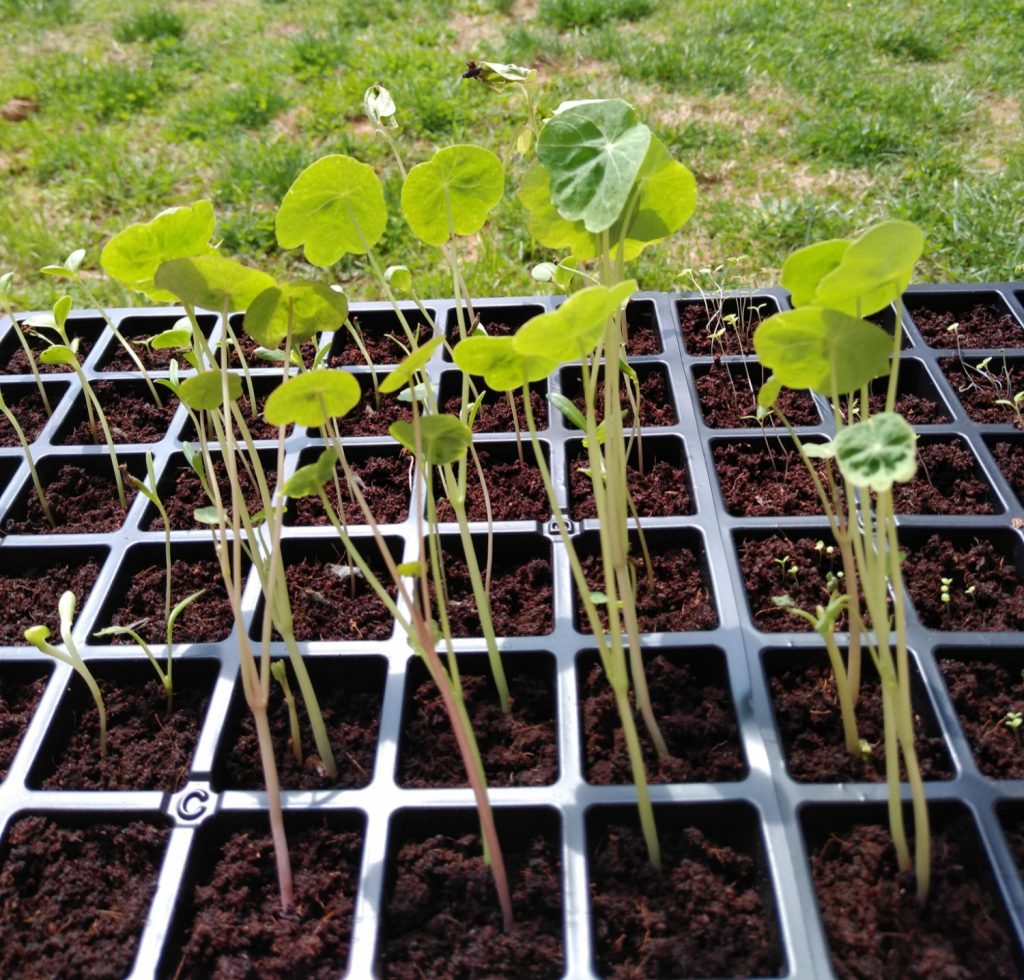
Seedlings late March 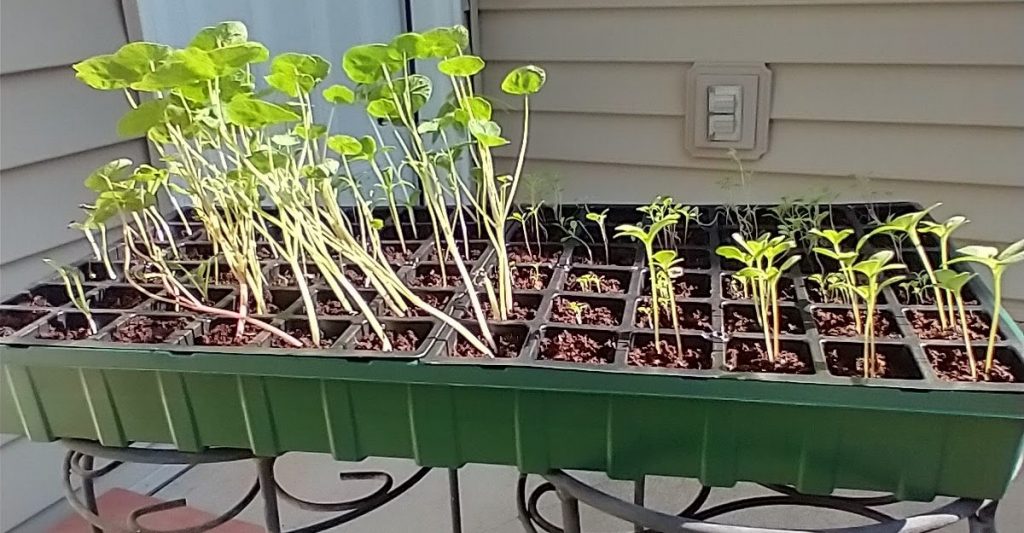
Seedlings early April 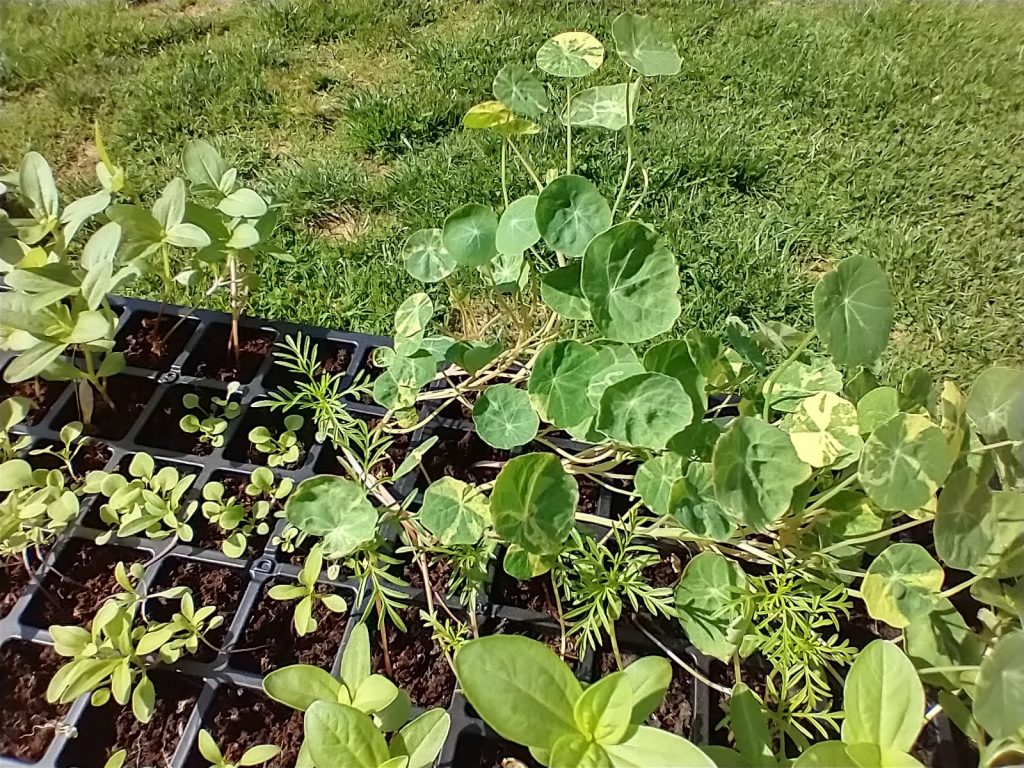
Seedlings mid-April 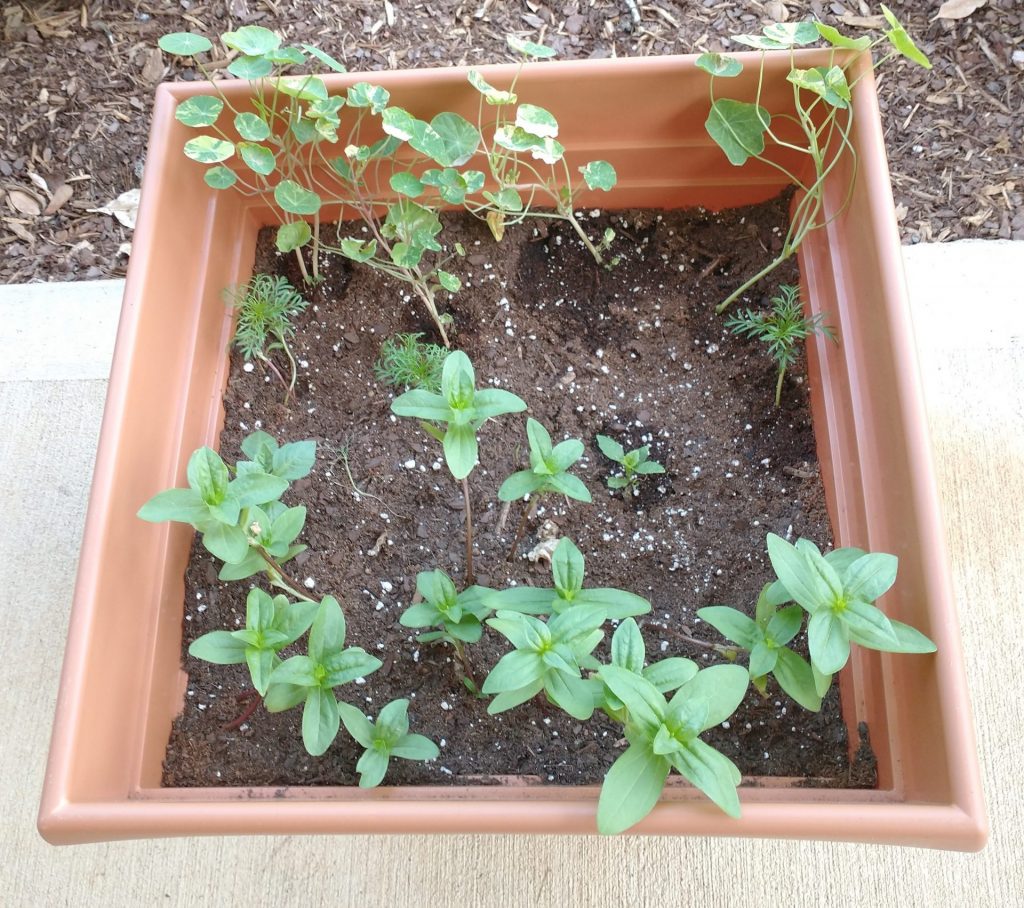
Seedlings early May 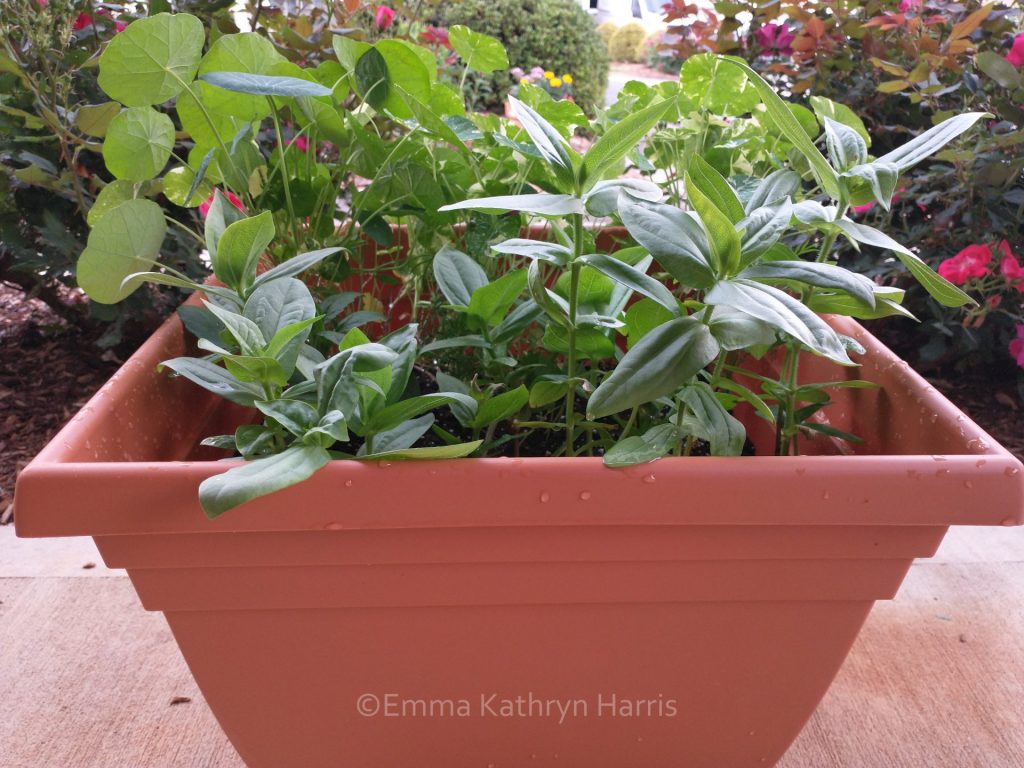
Seedlings late May
Final words
I stress patience because although it is a challenge for me, I also recognize the benefits of just waiting when it comes to plants. I can see the end results of my hard work paying off. Some results come quickly and others take a bit more time, but are always worth the wait, as they say.
While planting a few of your starter seedlings in a large container might seem disappointing because the container looks practically empty, within a few weeks, they’ll fill out and you’ll wonder if you overdid it (see image: Seedlings early May).
Again, check the growth size and spacing requirements to reap the maximum benefits. Use a ruler and stick it into the container if that will help you get a better idea of the final sizing as you map out your planting arrangement.
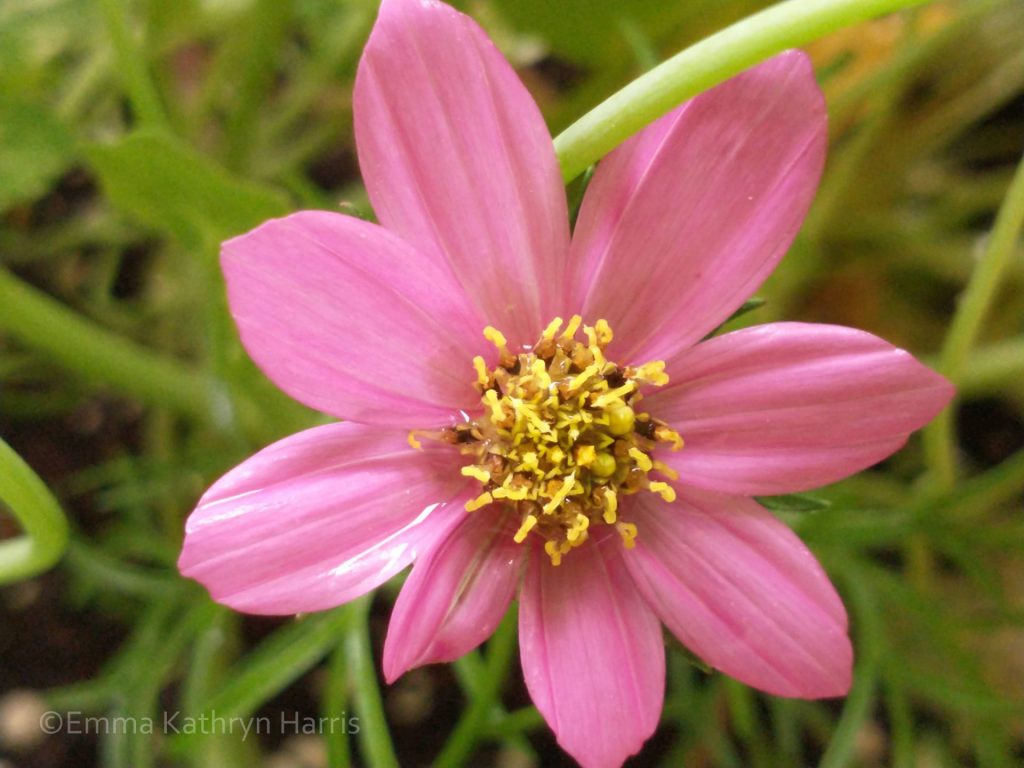
Pink cosmos 
White cosmos 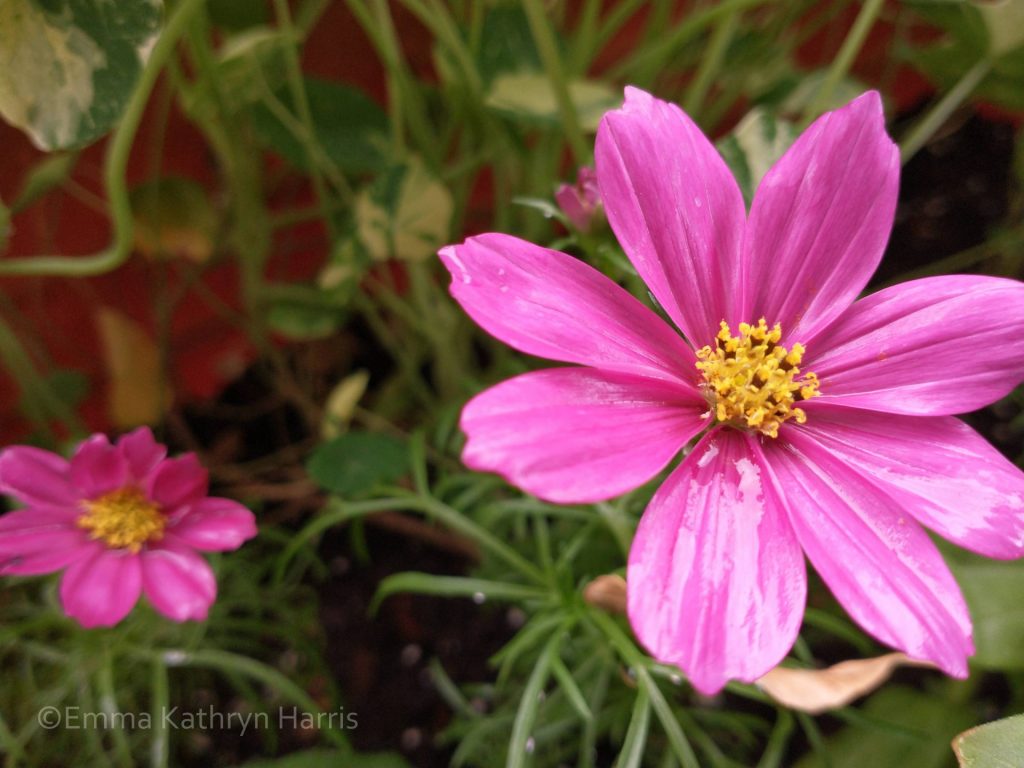
Pink cosmos 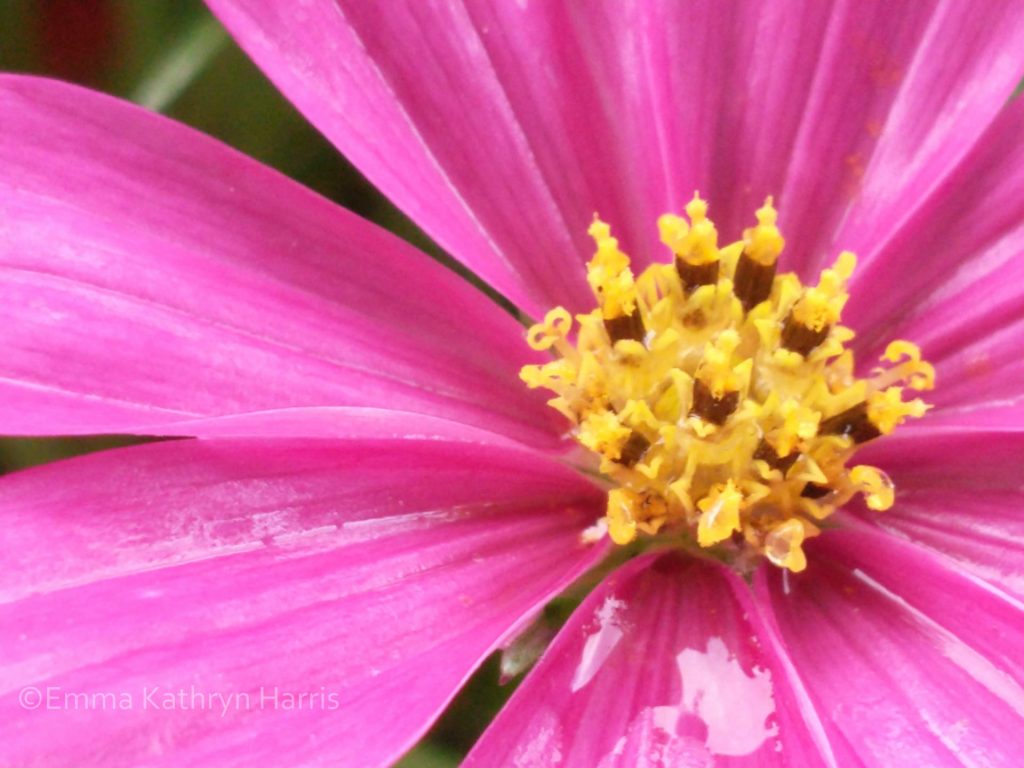
Pink cosmos
Don’t be afraid to experiment. Keep the plants’ labels with them or write down what you’ve planted and make notes along the way so that next year you will grasp fully your expectations. You’ll know what worked and what didn’t and what you need to do different moving forward.
And if some of your plants you purchased from a garden center really fail, they’ll usually offer a money back guarantee or allow you to replace the plants, so hang on to your receipts.
Happy growing!

